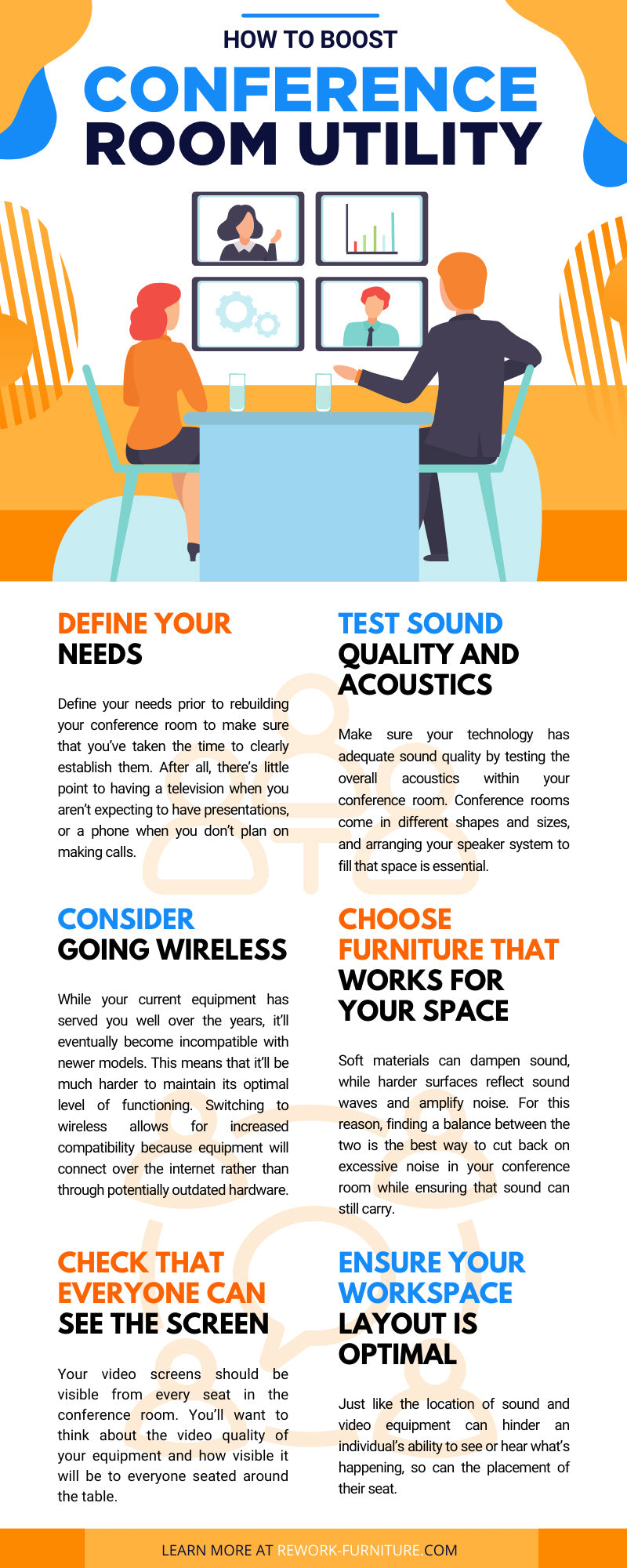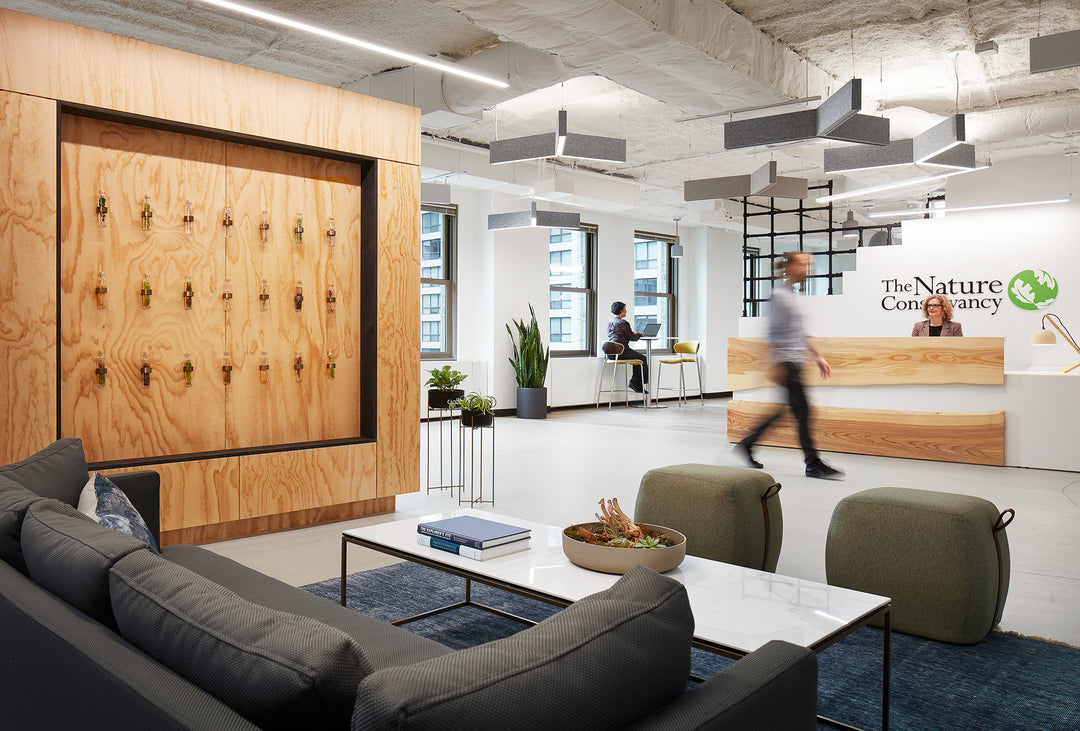How to Boost Conference Room Utility
Technology is at the core of most businesses—without it we’d be lost. From getting in touch with clients and coworkers, conducting presentations, and holding video conferences, it’s no secret that technology is very important. But having technology be available is only half the battle. It’s important to make sure that your office—namely, your conference room—is configured to allow for seamless technology integration. This is how to boost conference room utility through the incorporation of technology and all the factors that contribute to a system’s success.
Here’s how you can increase the usability of your conference room
When we think about designing a technologically-advanced conference room, it’s common to overlook everything except the tech itself. But aspects like your furniture and overall layout are also crucial to maximizing each device’s usefulness within a given space. We’ve rounded up four tips for designing a technologically-advanced conference room, so read on to learn more.
Test sound quality and acoustics
Make sure your technology has adequate sound quality by testing the overall acoustics within your conference room. Conference rooms come in different shapes and sizes, and arranging your speaker system to fill that space is essential. Test how things sound from all angles of the room. Take note to place speakers in areas you might not consider, such as back corners or on the ceiling. You may even want to retest the sound quality after furnishing your conference room. This way, you can be sure that your new pieces don’t have a dampening effect.
Check that everyone can see the screen
Your video screens should be visible from every seat in the conference room. You’ll want to think about the video quality of your equipment and how visible it will be to everyone seated around the table. This can be a challenge with long, rectangular conference tables and often times adding a screen adjuster or additional monitors can help. Much like with audio, you should test various seating locations around the room, and don’t be afraid to ask your team for their input on the matter.
Ensure your workspace layout is optimal
How you choose to design your room’s layout can also have an impact on technology effectiveness. Just like the location of sound and video equipment can hinder an individual’s ability to see or hear what’s happening, so can the placement of their seat. Arranging chairs too far away can limit sound or make participants feel disconnected. If seating is too close, people might feel crowded or distracted by noise. Placing certain pieces of furniture near AV systems has even been shown to reduce echo and noise.
Pulling in a professional designer to help guide your layout is a great way to make sure you’re making the most of your space. Contact Rework today to get in touch with a professional to help guide your workspace design.
Choose furniture that works for your space
You can also boost conference room utility by making sure that the type of furniture you use is compatible with your specific space. Soft materials can dampen sound, while harder surfaces reflect sound waves and amplify noise. For this reason, finding a balance between the two is the best way to cut back on excessive noise in your conference room while ensuring that sound can still carry. Purchasing conference tables with built-in outlets for electronics or cable organizers is also considered impactful to the room’s overall function.
Additional Tips for Optimizing Conference Room Technology
But the process doesn’t end there. In fact, there’s even more you can do to ensure that your conference room functions at optimal efficiency. Here are some of our additional tips to keep in mind throughout your redesign.
Define Your Needs
Define your needs prior to rebuilding your conference room to make sure that you’ve taken the time to clearly establish them. After all, there’s little point to having a television when you aren’t expecting to have presentations, or a phone when you don’t plan on making calls. It’s vital that you reevaluate what you need from your conference room as well as what your team wants to be able to use it for. Doing so will ensure that you acquire just the right number of resources to fulfill those requirements.
Consider Going Wireless
Something else to think about is the possibility of transitioning to wireless devices. While your current equipment has served you well over the years, it’ll eventually become incompatible with newer models. This means that it’ll be much harder to maintain its optimal level of functioning. Switching to wireless allows for increased compatibility because equipment will connect over the internet rather than through potentially outdated hardware. As such, you’ll no longer need to worry about finding a place for these clunky devices in your conference room.
Make the Space Comfortable
Ultimately, you want to make sure that the space is comfortable to spend time in and use—this is the best way to ensure that the space is optimized. Start by installing technology that is easy for your team to understand, then incorporate furniture that maximizes their comfort. Regularly asking your team for feedback during this process is another effective thing you can do to make sure their needs are being met. They may even be able to point out aspects you never would have thought of otherwise. To find the best furniture for your conference room, reach out to Rework today.
At Rework, we understand that technological setup and the proper furniture arrangement go hand in hand. This is why we seek to not only provide you with quality and comfortable ergonomic seating, but items that accommodate your functional needs as well. Our used office tables have been carefully acquired by our own decommission team and refurbished for modern applications. As such, they provide a beautiful aesthetic to any conference room as well as a functional surface for any technological setup.
For more information about our selection, give us a call or visit our Chicago showroom to see these pieces in person.





